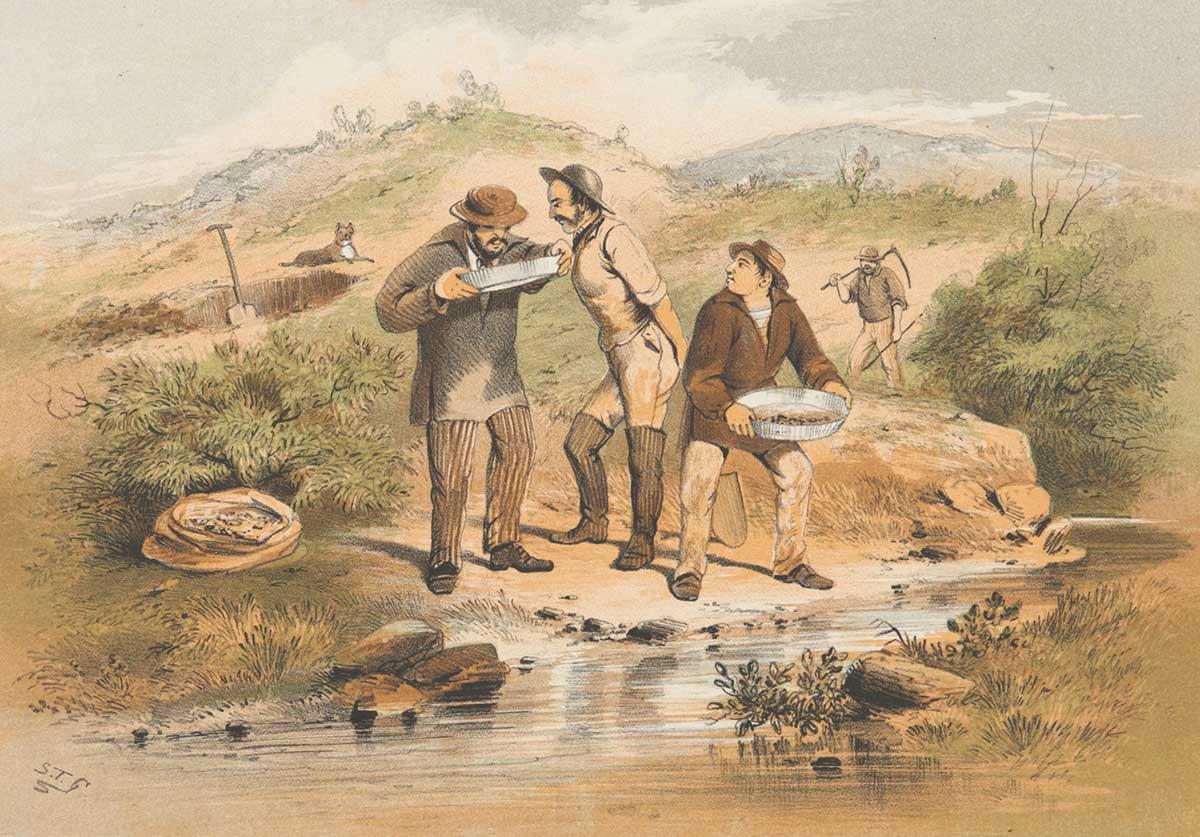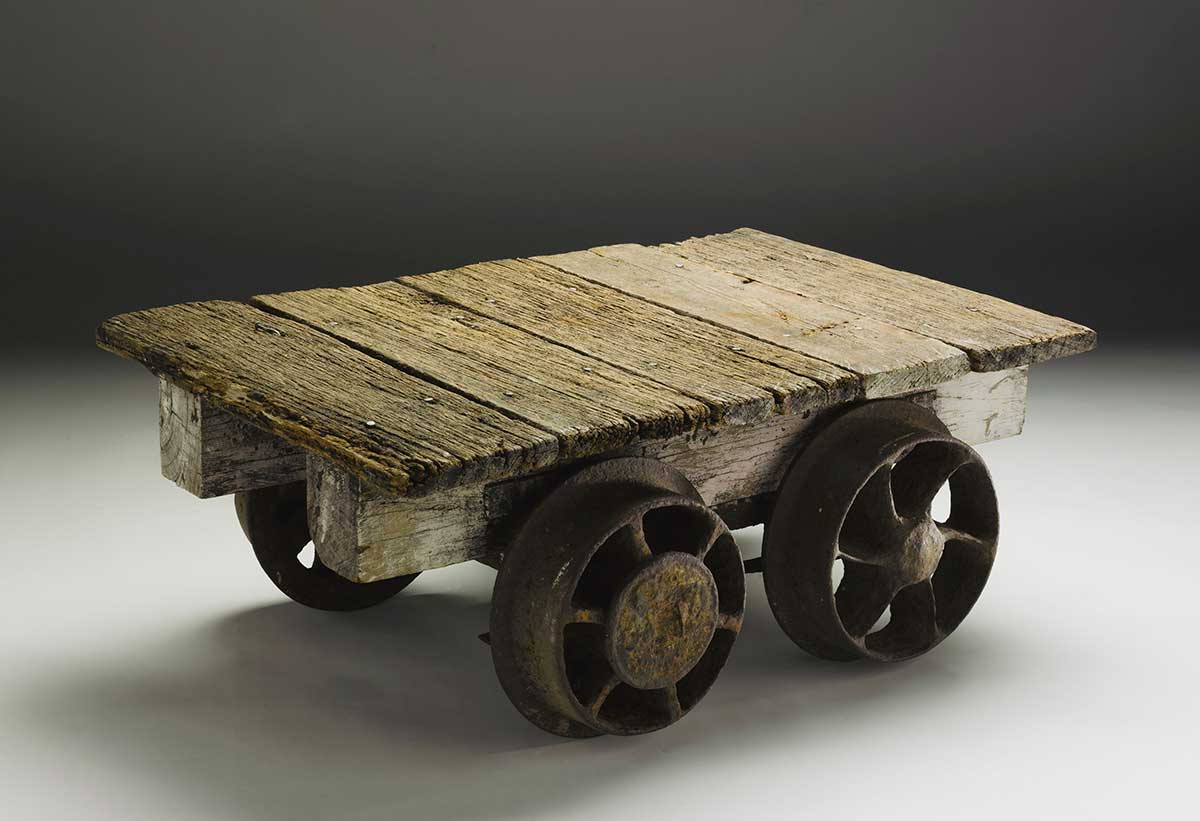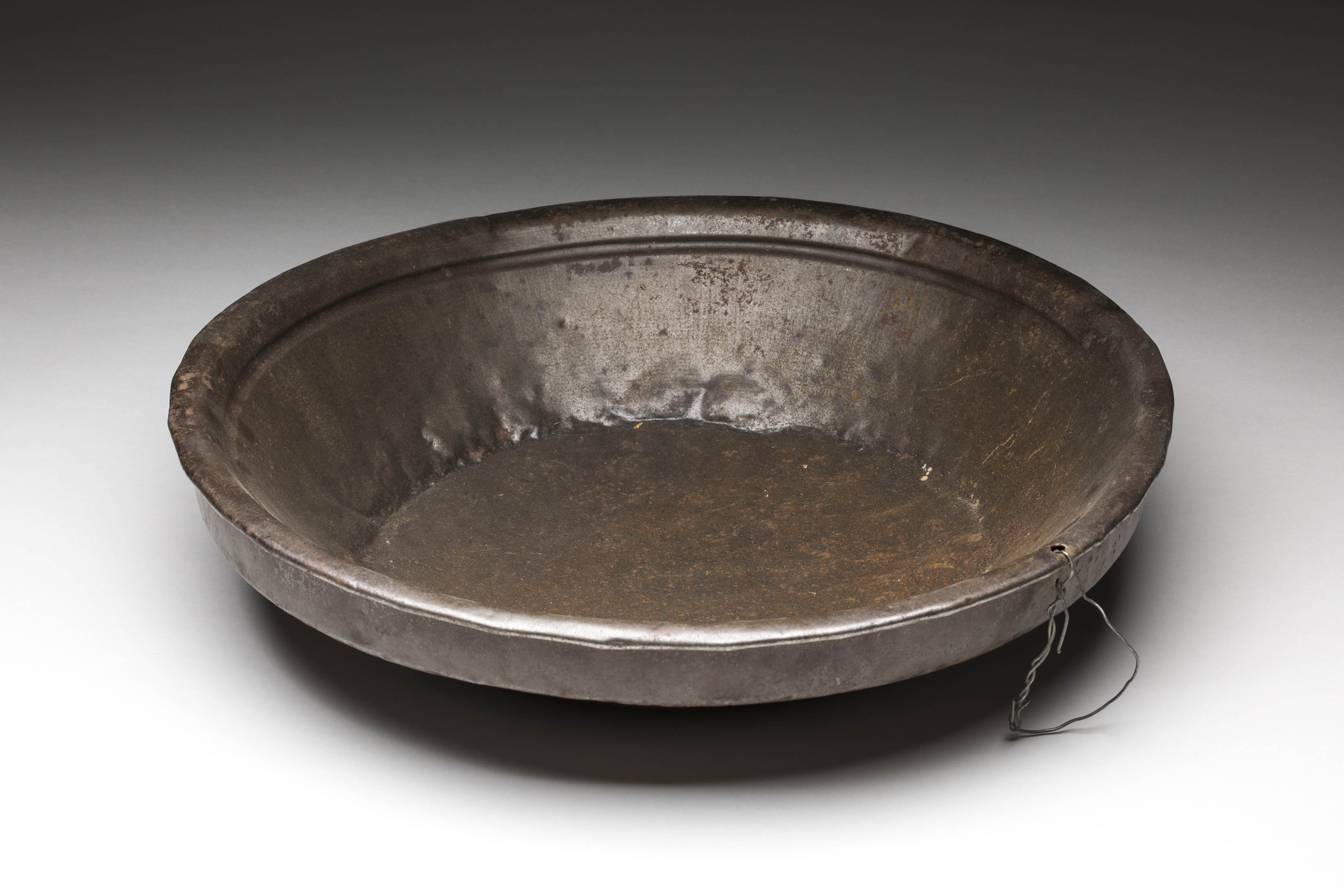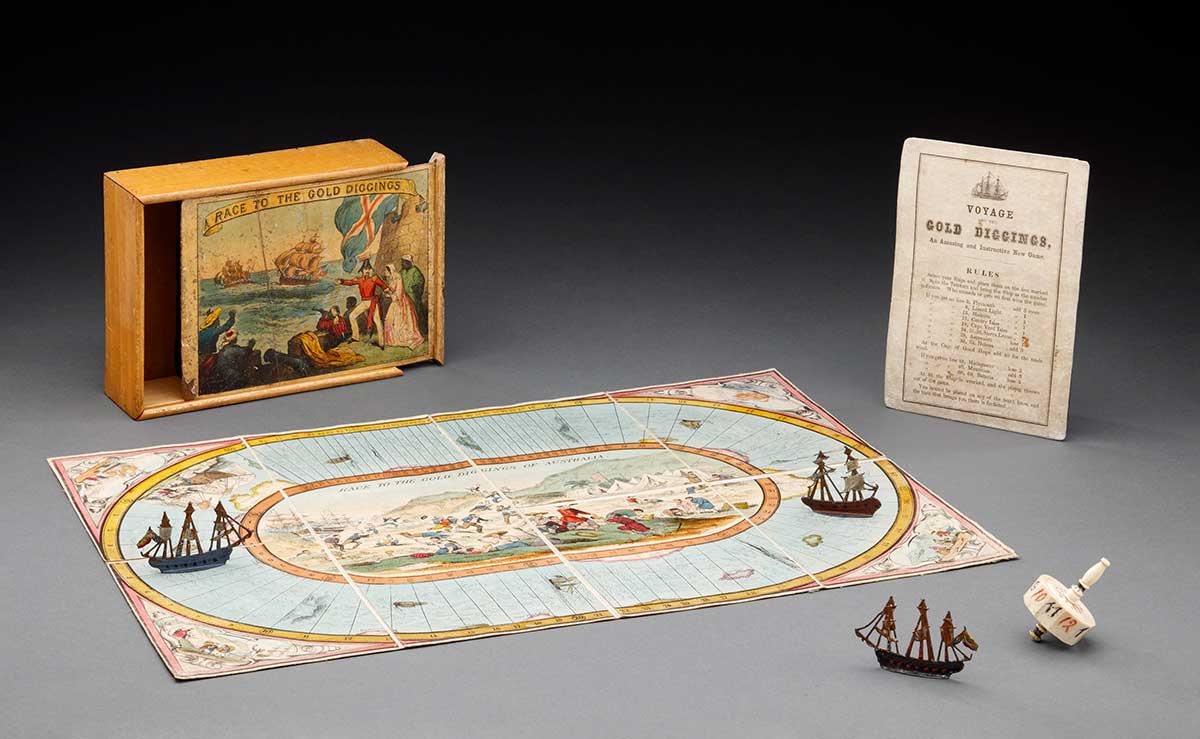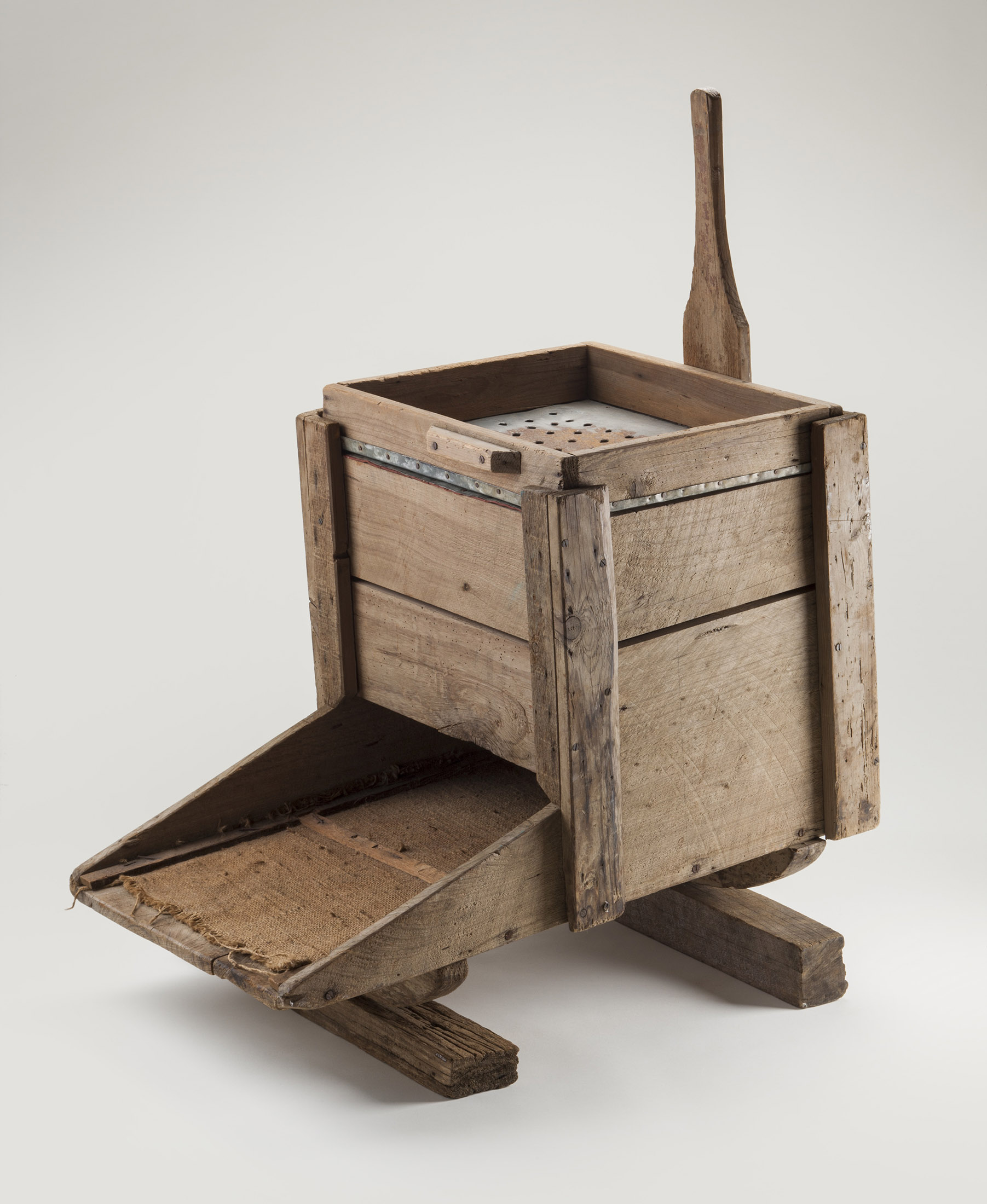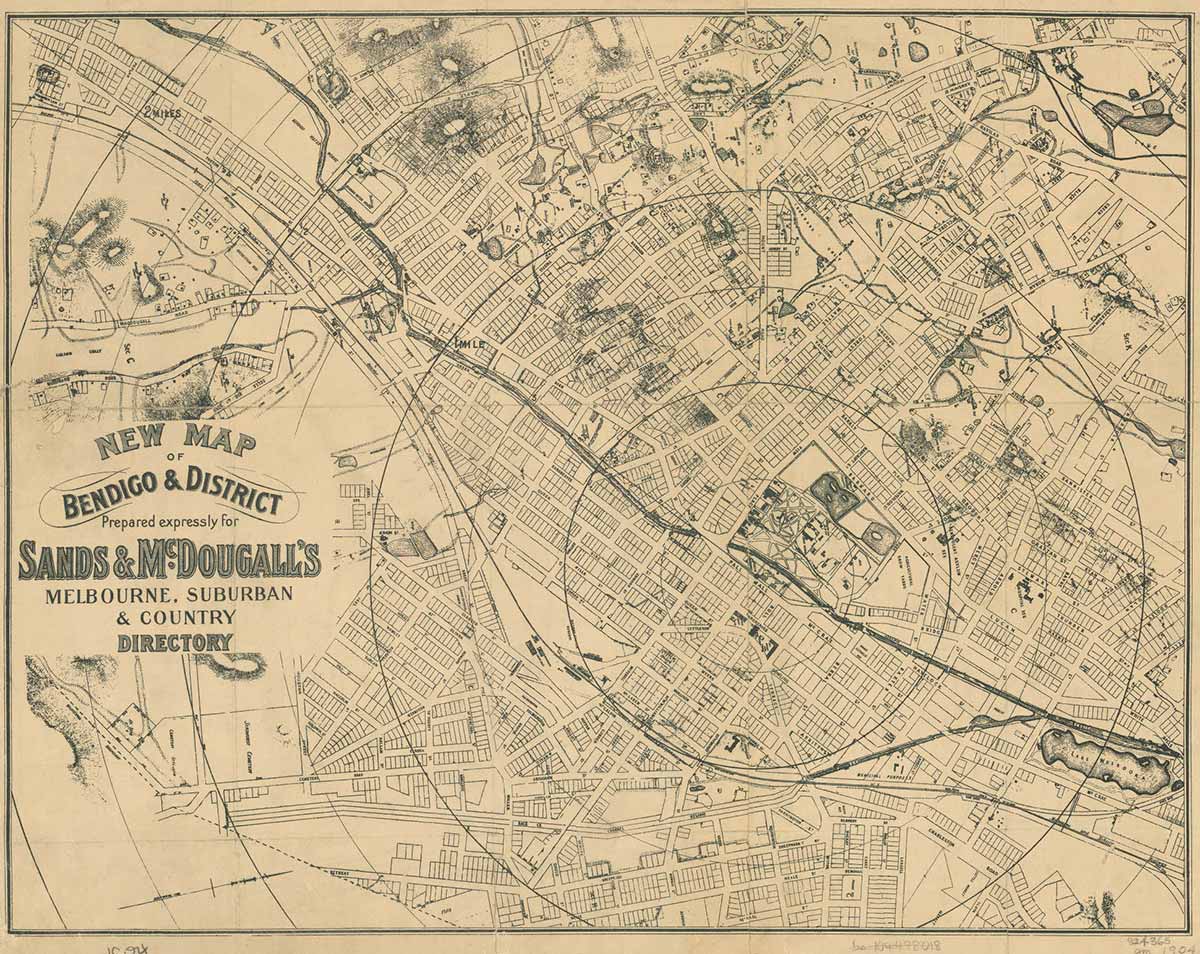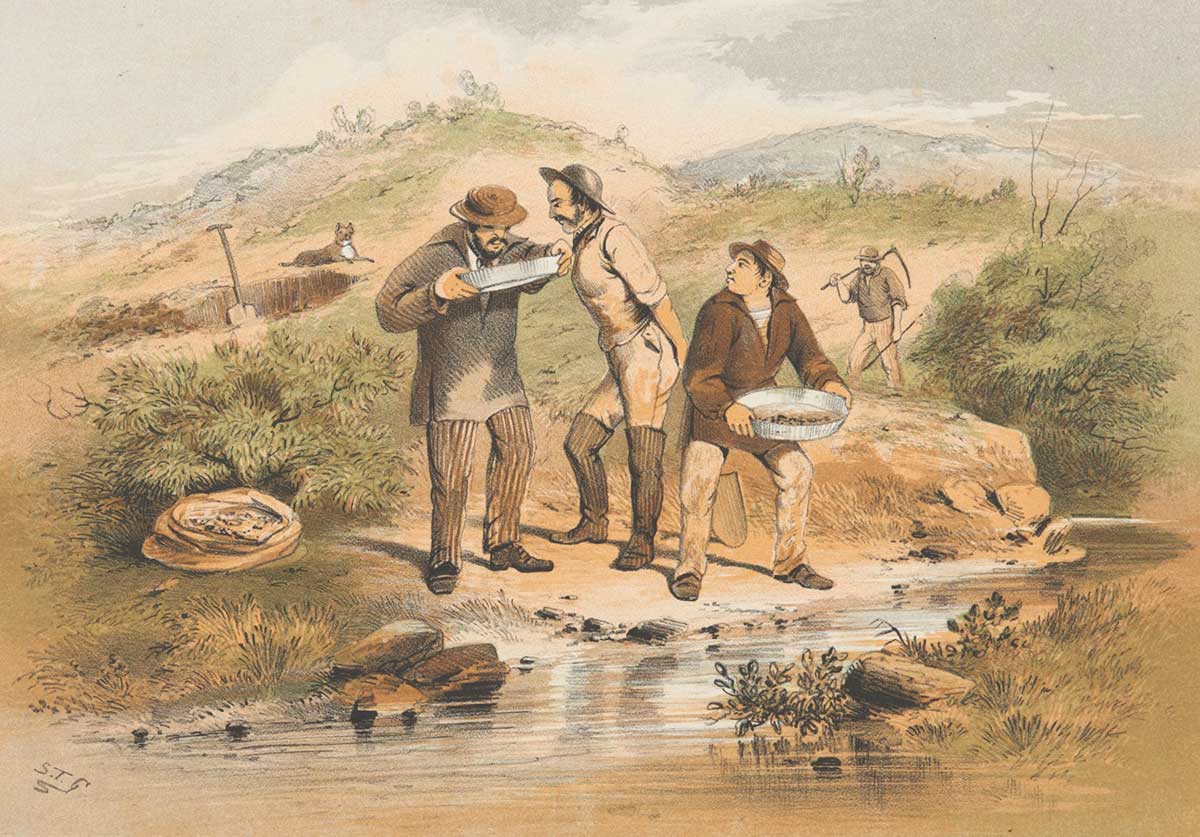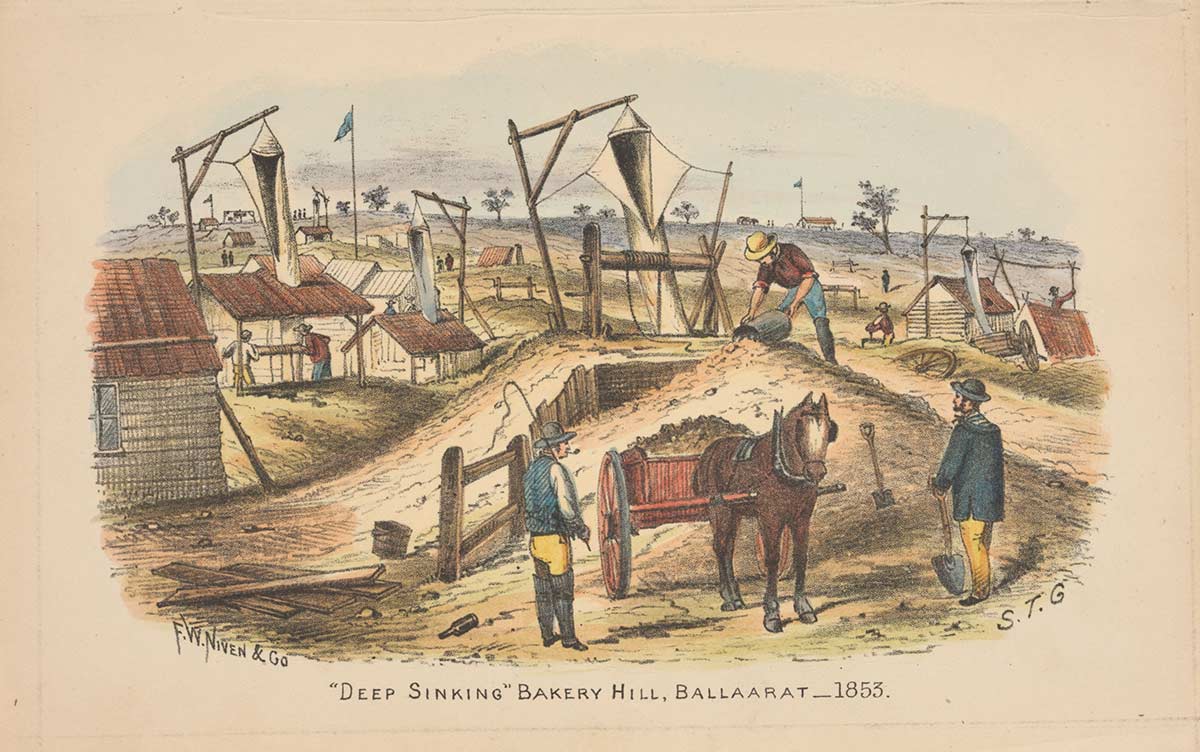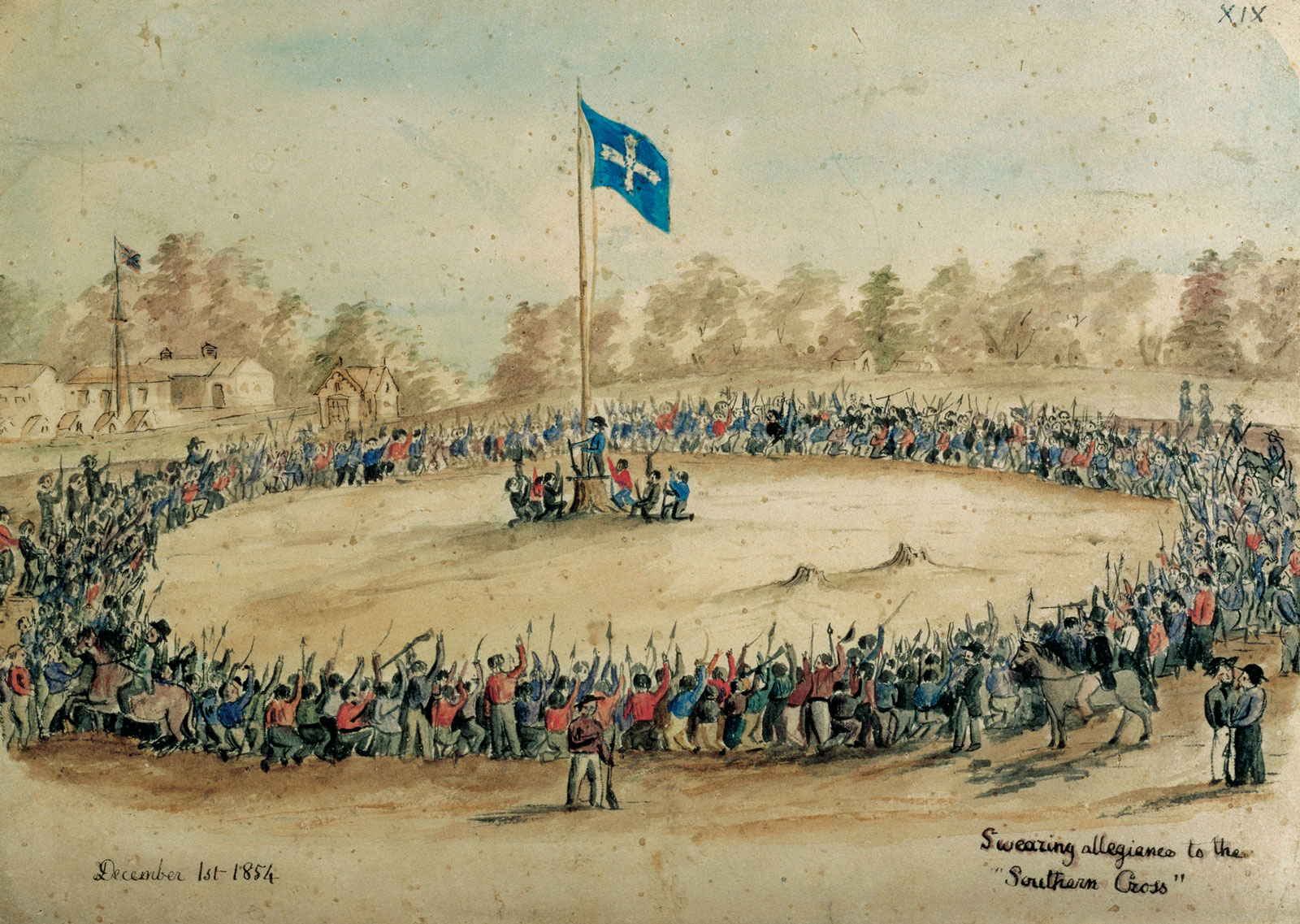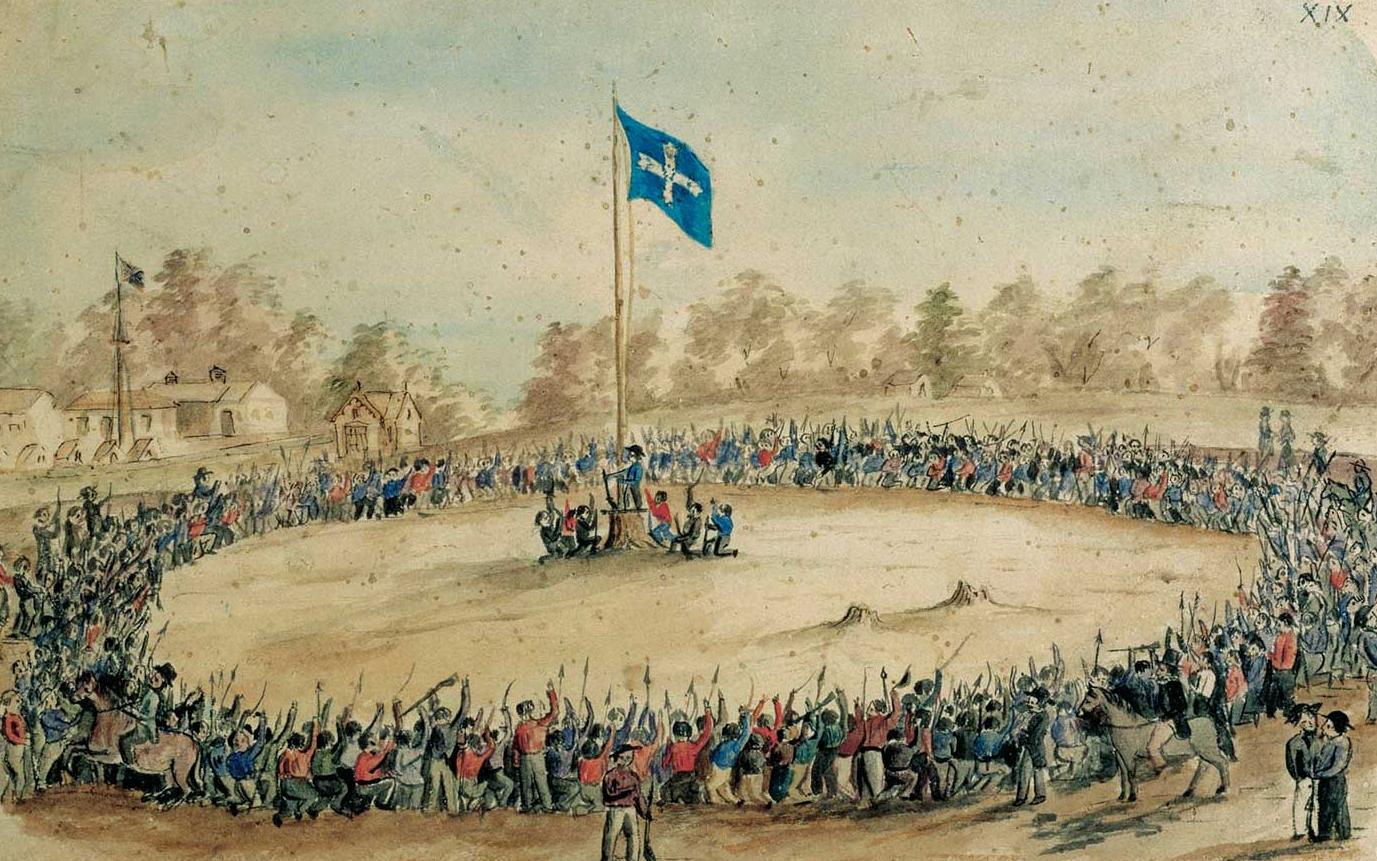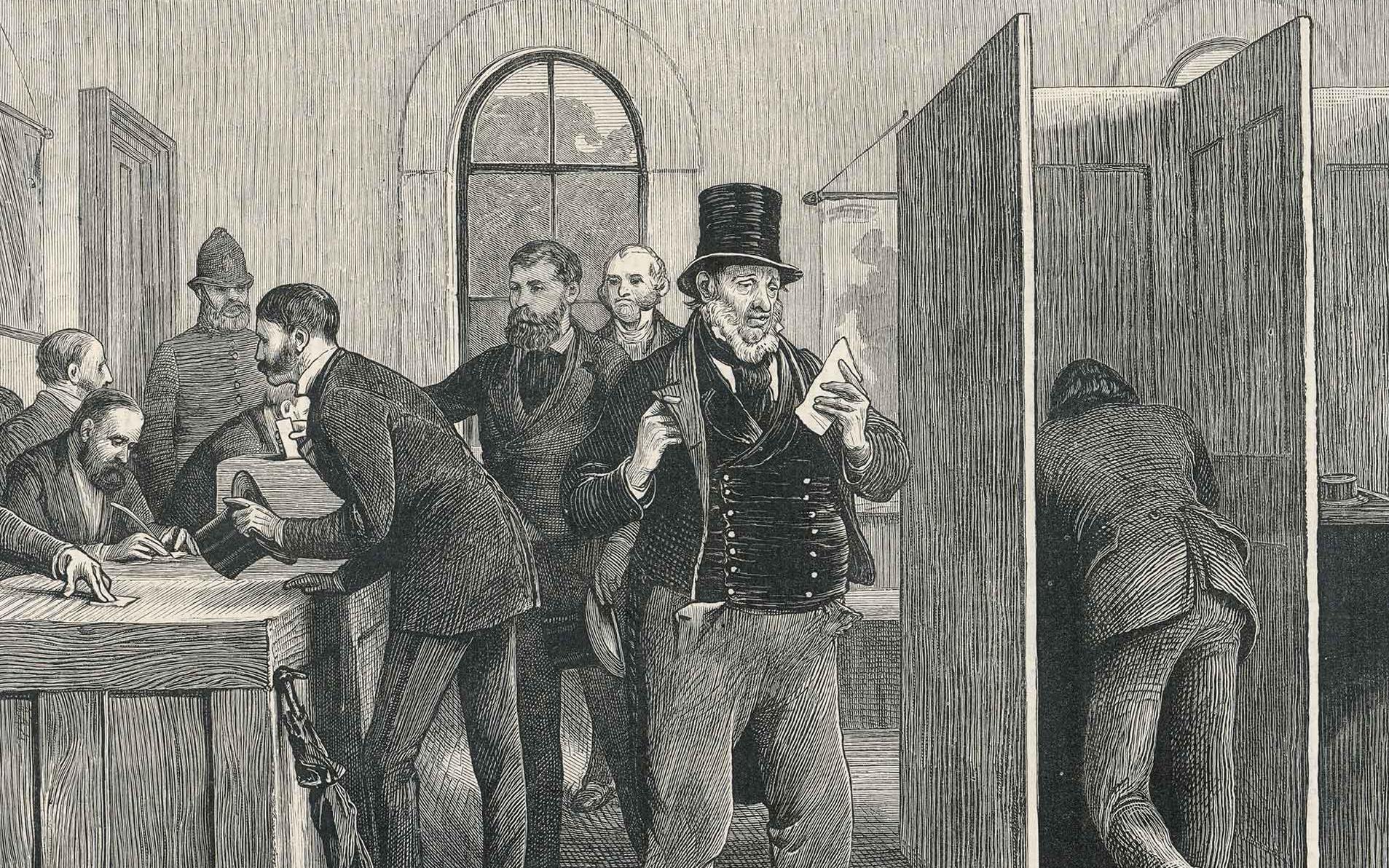‘A thousand cradles at work’
1851: Gold rushes in New South Wales and Victoria begin
‘A thousand cradles at work’
1851: Gold rushes in New South Wales and Victoria begin
In a snapshot
When gold was discovered in Australia in the 1850s it brought gold-seekers from around the world to the colonies. The first big discoveries of gold were at Ophir in New South Wales, and then at Ballarat and Bendigo Creek in Victoria. The gold rushes led to growth in Australia’s population and economy, as well as new ideas about how Australia should be organised and governed.
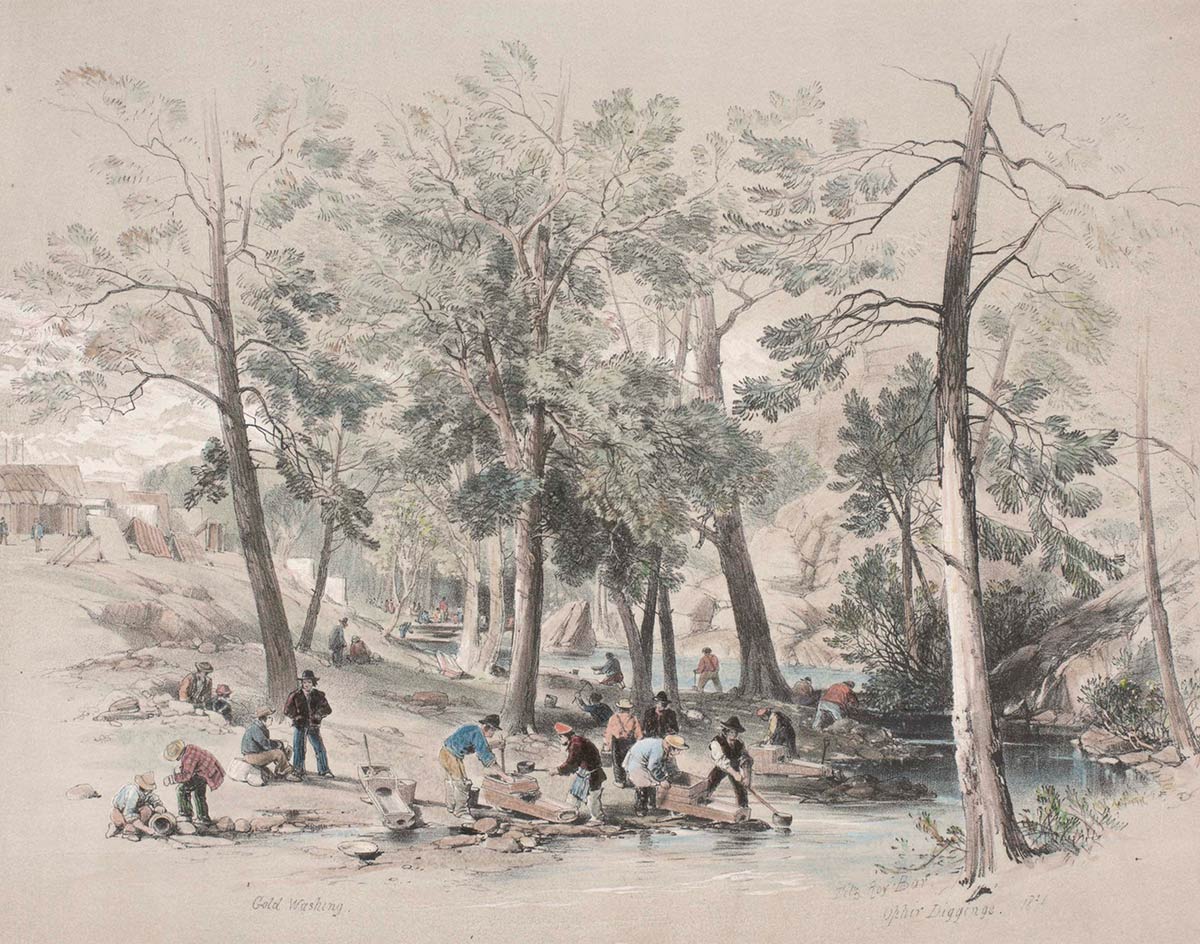
 Can you find out?
Can you find out?
1. How did the gold rush begin in Australia?
2. Who was Edward Hargraves and what role did he play in Australia’s gold rushes?
3. Why were the gold finds in Victoria so important, and what were the biggest changes brought by the discovery of gold?
When was gold discovered in Australia?
There were multiple gold finds in New South Wales, Tasmania and what would become Victoria before the 1850s. Governor George Gipps worried that if these discoveries were made public the people of New South Wales would mutiny.
In 1848 the California gold rush began in the United States of America. Many men left Australia hoping to find their fortune in California. This led to a shortage of workers and economic depression in Australia. The colonial governments became interested in finding gold so they could attract and keep people in Australia.
In 1849 the Governor of New South Wales, Charles FitzRoy, convinced the British Government to ask a government geologist, Samuel Stutchbury, to help find gold. FitzRoy also offered a reward for the first person to find a large amount of gold in New South Wales.
In 1848 William Tipple Smith found gold near Bathurst and the next year revealed the find to the Colonial Secretary Edward Thomson. However he was not given the reward, which was later claimed by Edward Hargraves.
‘There are … about a thousand cradles at work … at Ballarat … the population within a radius of five miles must be a population of about seven thousand men.’
Geelong Advertiser, 14 October 1851
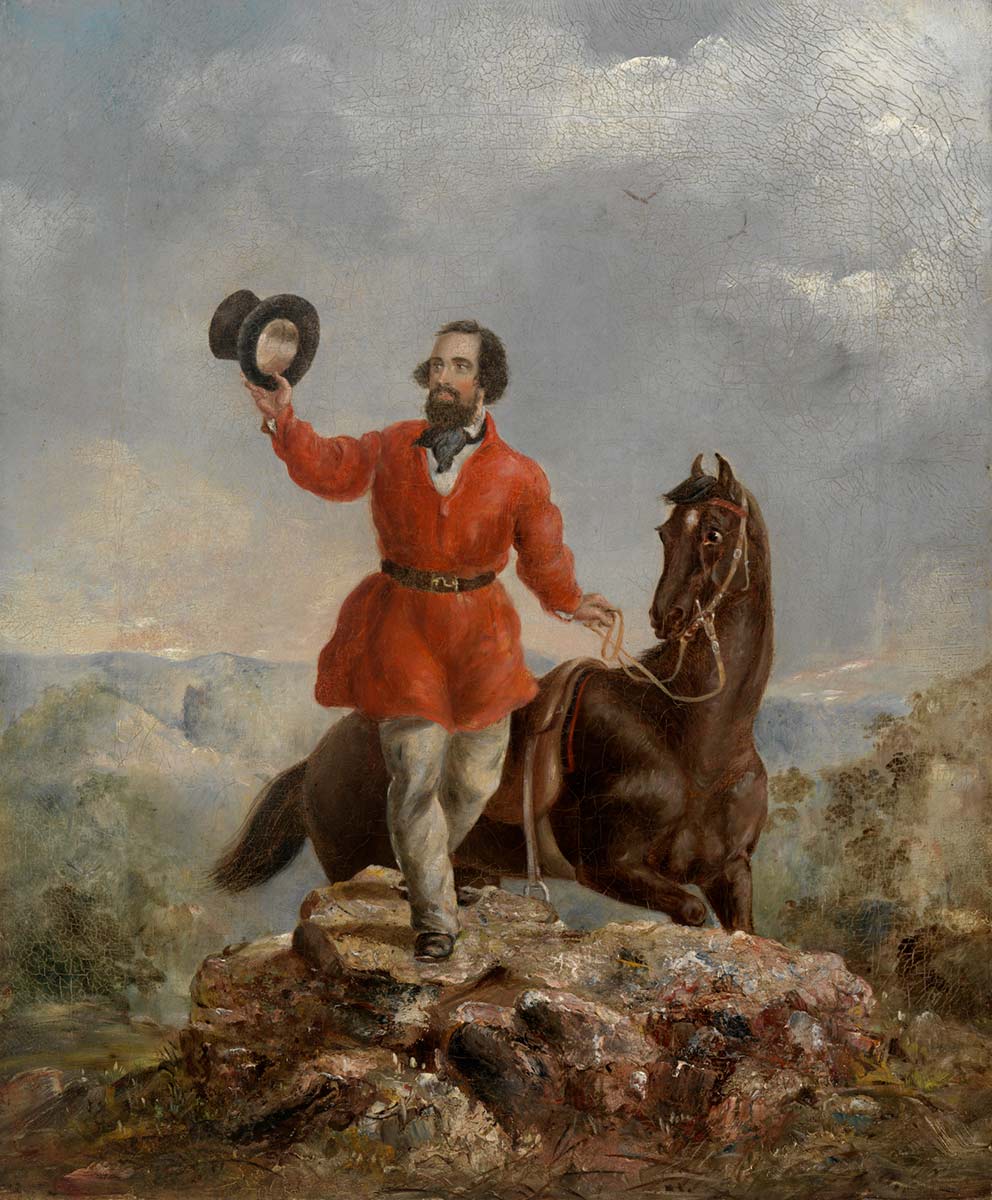
Who was Edward Hargraves and why was he important?
In 1849 Edward Hargraves sailed from Sydney for the Californian gold rush, but failed to find his fortune. When he returned to New South Wales in 1851 he immediately headed inland to find gold. Within weeks Hargraves and a few other men had found a small amount of gold at a place he named Ophir. He was given the Governor’s £10,000 prize (which he refused to share). News of the gold find was soon published in the Sydney Morning Herald, and by 15 May 1851, 300 diggers had arrived in Ophir. The gold rush had begun.
The government of the colony of Victoria offered a £200 reward to anyone who could find gold within 200 miles of Melbourne. Within six months gold was discovered in Clunes, and then at Ballarat, Castlemaine and Bendigo. In the 1850s the colony of Victoria produced one-third of the world’s gold. Gold was also discovered in Tasmania (1852), Queensland (from 1857) and the Northern Territory (from 1871). In the 1890s, a new series of gold rushes began when huge gold fields were found at Kalgoorlie and Coolgardie in Western Australia.
Research task
Find out how much the Australian population increased as a percentage between 1851 and 1871 because of the discovery of gold.
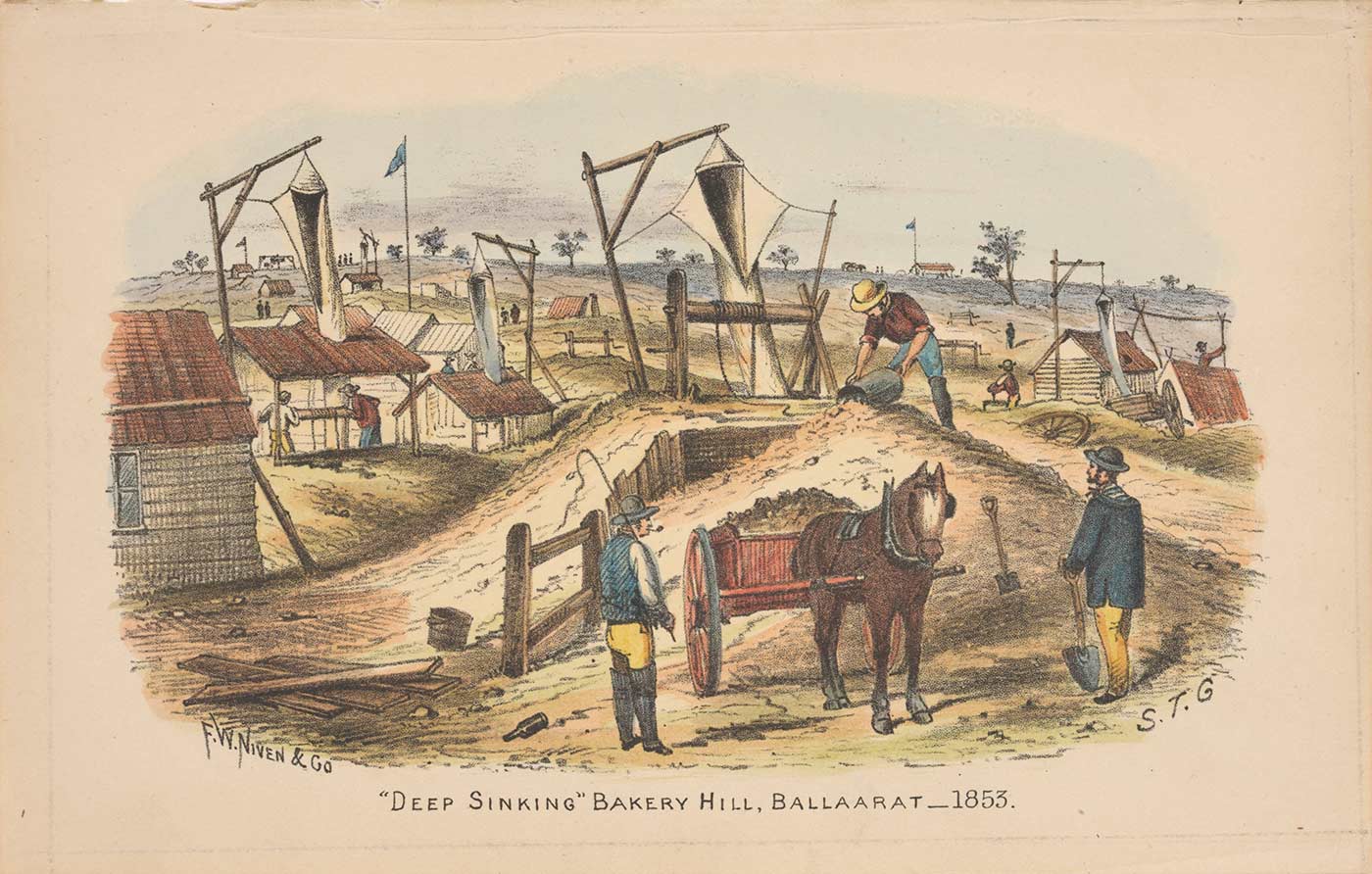
What was life like on the goldfields?
Life on the goldfields was tough for miners, their families, the police and immigrants from countries like China. There was no guarantee that miners would ever find enough gold to make a profit. Competition over gold, racial tensions and anger over mining licences led to violence on the goldfields. This can be seen in violence between miners and police at the Eureka Stockade Rebellion and the anti-Chinese Lambing Flat Riots.
Research task
Do some research to find out how the city of Melbourne was affected by the gold rushes and what it became known as around 1880.
Were there different experiences of goldfields life?
What happened at Ballarat on Wada Wurrung Country during the gold rush? How did First Nations people participate? Hear from Professor Fred Cahir, Sovereign Hill’s Andrew Pearce, Eureka Centre’s Sarah Van de Wouw and a National Library of Australia oral history about a Chinese miner in the Hey History! podcast.
What were the biggest changes brought by the gold discoveries?
The gold rushes helped create a wealthy society with a standard of living that was envied by people across the world. Between 1851 and 1871 the Australian population grew from 430,000 people to 1.7 million as migrants from Britain, China, North America and continental Europe arrived to look for gold. The gold rushes also attracted men and women who had new ideas about how society should be organised and governed. This eventually resulted in world-leading social experiments such as the secret ballot, the eight-hour day and the formation of the Australian Labor Party.
Read a longer version of this Defining Moment on the National Museum of Australia’s website.
 What did you learn?
What did you learn?
1. How did the gold rush begin in Australia?
2. Who was Edward Hargraves and what role did he play in Australia’s gold rushes?
3. Why were the gold finds in Victoria so important, and what were the biggest changes brought by the discovery of gold?






